Intro
Discover foods high in fiber, including fruits, vegetables, and whole grains, to boost digestive health and support healthy blood sugar levels with soluble and insoluble fiber rich foods.
The importance of fiber in our diets cannot be overstated. Fiber plays a crucial role in maintaining a healthy digestive system, promoting satiety, and even supporting healthy blood sugar levels. Despite its numerous benefits, many of us fail to consume enough fiber on a daily basis. The average adult consumes only about 15 grams of fiber per day, which is significantly less than the recommended daily intake of 25-30 grams. This is why it's essential to focus on incorporating foods high in fiber into our diets to reap the numerous health benefits that come with it.
A high-fiber diet has been shown to have a significant impact on our overall health and wellbeing. Fiber helps to regulate bowel movements, prevent constipation, and support the growth of beneficial gut bacteria. Additionally, a high-fiber diet has been linked to a reduced risk of chronic diseases such as heart disease, type 2 diabetes, and certain types of cancer. With so many benefits to be had, it's no wonder that health experts and nutritionists are always emphasizing the importance of consuming enough fiber.
One of the best ways to increase our fiber intake is to focus on whole, unprocessed foods. Fruits, vegetables, whole grains, and legumes are all excellent sources of fiber and should be staples in our diets. By making a few simple changes to our eating habits, such as swapping white bread for whole grain bread or adding more fruits and vegetables to our meals, we can significantly increase our fiber intake and start to experience the many benefits that come with it.
Foods High In Fiber
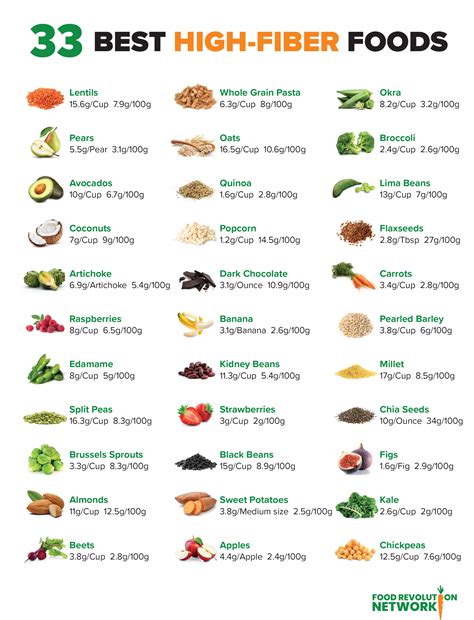
Foods high in fiber are abundant and varied, making it easy to incorporate them into our diets. Some of the richest sources of fiber include legumes such as beans, lentils, and peas. These foods are not only high in fiber but also rich in protein, vitamins, and minerals, making them a nutritious addition to any meal. Other high-fiber foods include whole grains such as brown rice, quinoa, and whole wheat bread, as well as fruits and vegetables like apples, bananas, and broccoli.
Legumes
Legumes are some of the richest sources of fiber and are an excellent addition to a high-fiber diet. Some of the highest fiber legumes include: * Lentils: 1 cup cooked lentils contains about 16 grams of fiber * Chickpeas: 1 cup cooked chickpeas contains about 12 grams of fiber * Black beans: 1 cup cooked black beans contains about 9 grams of fiber * Kidney beans: 1 cup cooked kidney beans contains about 8 grams of fiberBenefits Of A High-Fiber Diet
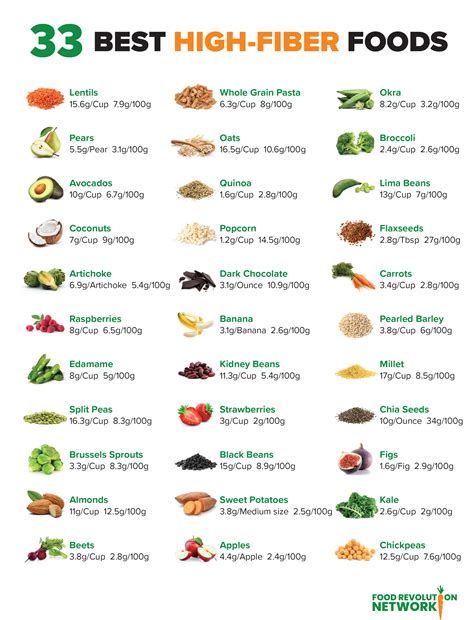
A high-fiber diet has numerous benefits, from promoting digestive health to supporting healthy blood sugar levels. Some of the key benefits of a high-fiber diet include:
- Promoting regular bowel movements and preventing constipation
- Supporting the growth of beneficial gut bacteria
- Helping to lower cholesterol levels and reduce the risk of heart disease
- Aiding in weight management by promoting feelings of fullness and reducing hunger
- Supporting healthy blood sugar levels and reducing the risk of type 2 diabetes
Supporting Healthy Blood Sugar Levels
A high-fiber diet has been shown to have a positive impact on blood sugar levels, making it an essential component of a healthy diet for those with diabetes or at risk of developing the condition. Fiber helps to slow the absorption of sugar into the bloodstream, reducing the risk of spikes in blood sugar levels. Additionally, a high-fiber diet has been shown to improve insulin sensitivity, making it easier for the body to regulate blood sugar levels.Incorporating More Fiber Into Your Diet
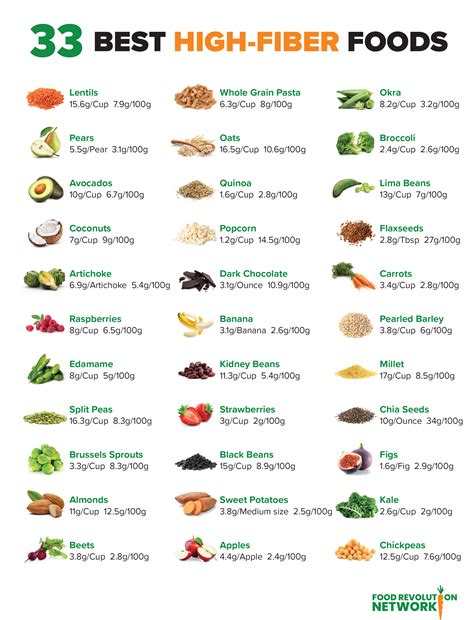
Incorporating more fiber into your diet is easier than you think. Here are some simple tips to get you started:
- Start your day with a high-fiber breakfast, such as oatmeal with fruit and nuts
- Snack on fruits and vegetables throughout the day
- Add legumes to your meals, such as beans to your favorite soups or stews
- Choose whole grains over refined grains, such as brown rice instead of white rice
- Experiment with new high-fiber foods, such as lentils or quinoa
Overcoming Common Barriers To A High-Fiber Diet
One of the most common barriers to a high-fiber diet is the potential for digestive discomfort. Some people may experience bloating, gas, or stomach cramps when increasing their fiber intake. However, this can be easily overcome by: * Gradually increasing fiber intake to allow the digestive system to adjust * Drinking plenty of water to help fiber move through the digestive system * Avoiding foods that are high in added sugars, salt, and unhealthy fatsHigh-Fiber Foods For Specific Health Needs
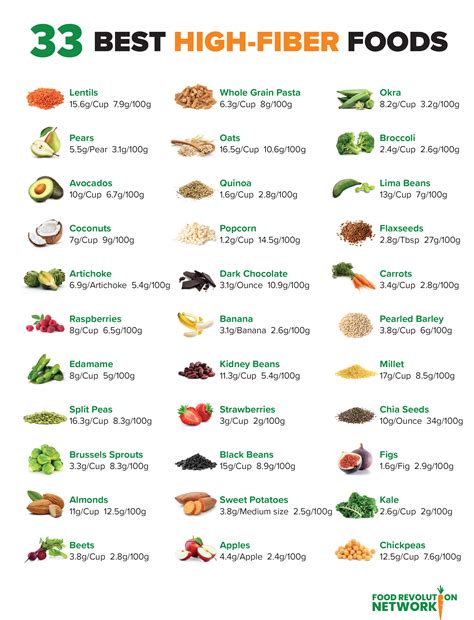
Different high-fiber foods can be beneficial for specific health needs. For example:
- For heart health, foods high in soluble fiber such as oats, barley, and fruits are beneficial
- For digestive health, foods high in prebiotic fiber such as asparagus, bananas, and onions are beneficial
- For weight management, foods high in insoluble fiber such as whole grains, vegetables, and legumes are beneficial
High-Fiber Foods For Heart Health
A high-fiber diet has been shown to have a positive impact on heart health, reducing the risk of heart disease and stroke. Some of the best high-fiber foods for heart health include: * Oats: 1 cup cooked oats contains about 4 grams of fiber * Barley: 1 cup cooked barley contains about 6 grams of fiber * Fruits: 1 medium apple contains about 4 grams of fiberConclusion And Next Steps
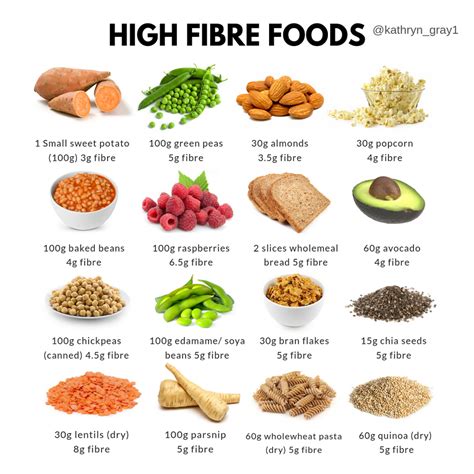
In conclusion, incorporating more fiber into your diet is a simple and effective way to improve your overall health and wellbeing. By focusing on whole, unprocessed foods and making a few simple changes to your eating habits, you can significantly increase your fiber intake and start to experience the many benefits that come with it. Whether you're looking to improve your digestive health, support healthy blood sugar levels, or reduce your risk of chronic disease, a high-fiber diet is an excellent place to start.
We invite you to share your thoughts and experiences with high-fiber diets in the comments below. Have you noticed any benefits from increasing your fiber intake? Do you have any favorite high-fiber foods or recipes to share? Let's work together to promote healthy eating habits and support each other on our journey to better health.
What are the benefits of a high-fiber diet?
+A high-fiber diet has numerous benefits, including promoting digestive health, supporting healthy blood sugar levels, and reducing the risk of chronic disease.
How much fiber should I be eating per day?
+The recommended daily intake of fiber is 25-30 grams per day. However, the average adult consumes only about 15 grams of fiber per day.
What are some high-fiber foods that I can add to my diet?
+Some high-fiber foods that you can add to your diet include legumes, whole grains, fruits, and vegetables. Some examples include lentils, chickpeas, brown rice, quinoa, apples, and broccoli.
